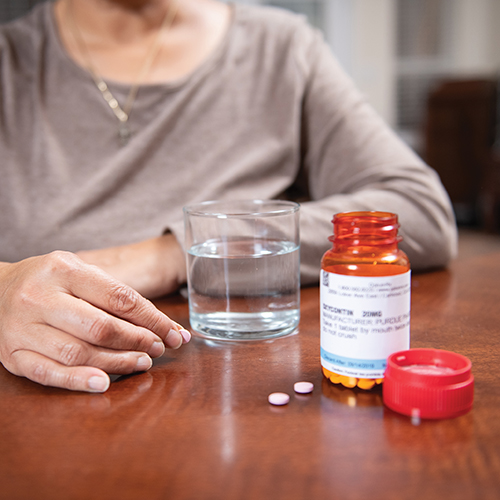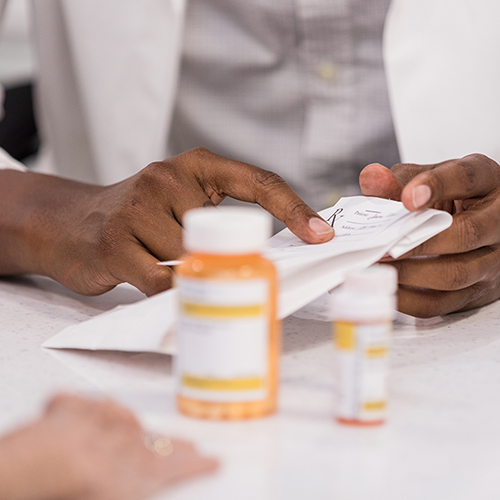October 2021
For many people, taking medication is a regular part of their daily routines and an important part of staying healthy. Nearly 49% of all Americans used at least one prescription drug during a 30-day period. Of adults ages 40 to 79, roughly 70% take at least one prescription drug — and nearly 23% use at least five.
If you take medications regularly or have started a new medication, you should talk to your doctor about having a medication review. Here’s what you need to know about this helpful healthcare management tool.
When do medication reviews typically happen?
Typically, quick medication reviews are conducted before every doctor’s appointment, medical procedure, or emergency room visit.
If you’re 65 or older or on several prescription medications, don’t be surprised if your doctor says they’d like to go over your medications in-depth every year. That’s because as you get older, you’re more likely to take several medications for different conditions. Fifty-four percent of adults aged 65 and older take four or more prescription drugs.
Your pharmacist can also review your medications when you’re picking up a prescription, but they can’t change or prescribe medications. Only your doctor can do that.
What is a medication review?
During a medication review, also called a medication therapy review, your doctor or pharmacist will go over the following:
- Your prescription medications, what dosage you take, and how often you take them.
- Any over-the-counter medications you take, what dosage you take, and how often you take them.
- Any vitamins, minerals, herbals, and other supplements you take; what dosage you take; and how often you take them.
- Your alcohol and drug use. Alcohol and drugs can interfere with medications and increase medication side effects, such as drowsiness or jitteriness.
- Any issues or concerns, such as side effects or trouble taking the medication.
Why should you have a medication review?
A medication review can help you to:
- Avoid interactions. The medicines you take can interfere with one another. They can also interact with what you eat or drink. This can make the medication less effective. It can also increase the risk of side effects. In some cases, combining medications that shouldn’t be combined can lead to dangerous side effects.
- Manage side effects. It’s not uncommon to experience side effects with medication. If side effects keep you from taking your medication, your doctor or pharmacist can help you manage them. Your doctor can also lower the dose or switch you to a different medication.
- Reduce medication errors. Each year, 7,000 to 9,000 people in the U.S. die as a result of medication errors, according to StatPearls. Your doctor or pharmacist can make sure that what you are taking is what was prescribed. They can also help you with taking your medication as directed.
- Reduce the risk of falls. Every year, roughly 36 million older Americans fall — and about 20% of them sustain a serious injury, like a broken bone or head injury. And about 32,000 of these falls result in death, according to the CDC. Certain medications, as well as OTC drugs and herbal supplements, can increase the risk of falls. The CDC Fact Sheet on Medications Linked to Falls includes antidepressants, muscle relaxants, antihistamines, opioid pain medications, and drugs used to lower blood pressure. It’s important to tell your doctor or pharmacist if you’re feeling dizzy, drowsy, lightheaded, or confused or if you have blurred vision. These can increase your risk of falling and can be related to a medication you’re taking.
- Prevent an accidental overdose. Prescription and OTC drugs can contain the same active ingredients. For example, acetaminophen, the active ingredient in Tylenol, is found in many prescription pain killers. Taking too much can damage your liver. In extreme cases, it can be fatal. Taking more than one opioid medication at the same time can also be dangerous. A review can help improve medication safety.



